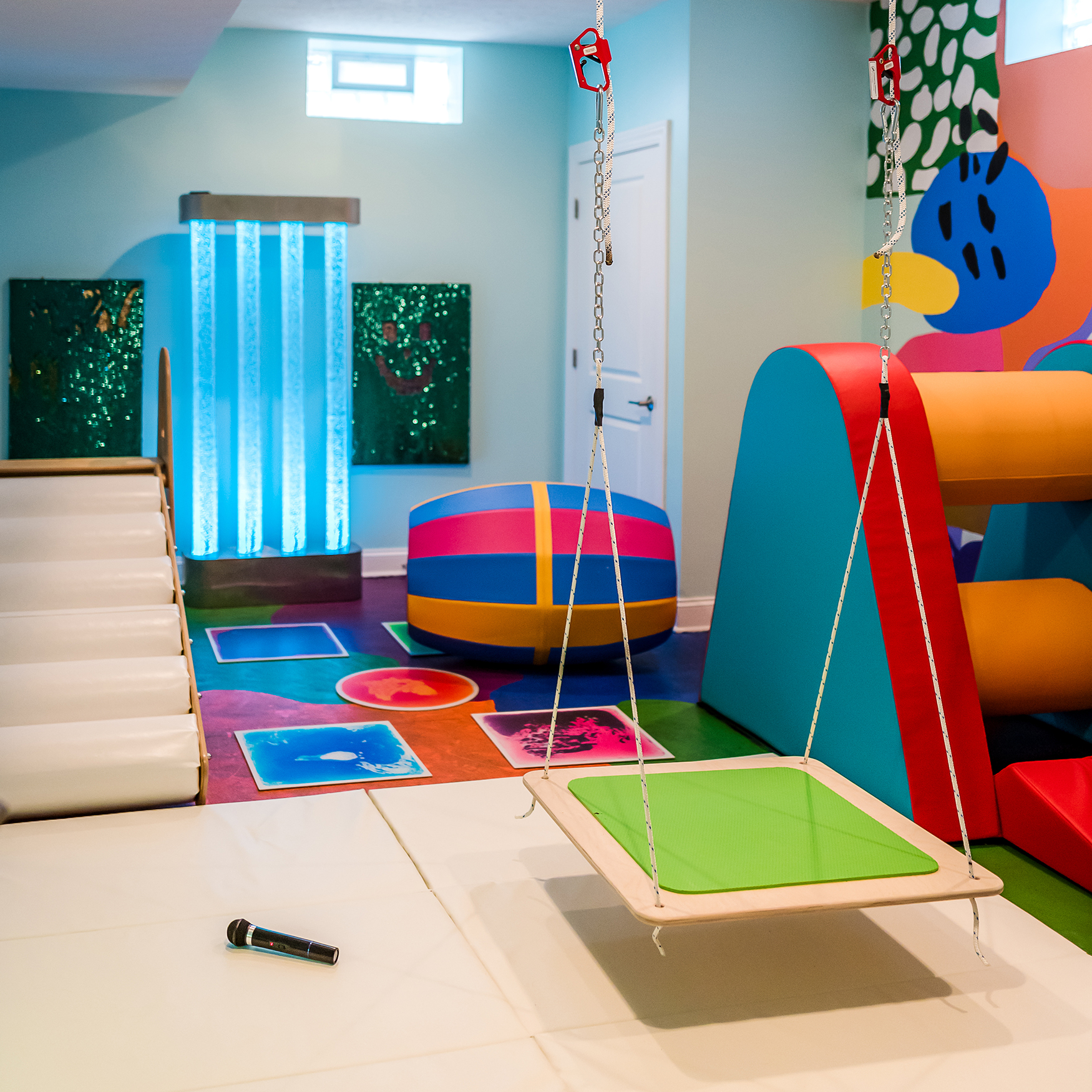Jump to:
A successful sensory room is usually used to help a child self-regulate their arousal level. If they’re overexcited it will help them calm down, and if they’re low-energy it can increase their alertness and focus. Recently special education is focusing on a different benefit of sensory rooms, namely that of emotional regulation.
As parents, our goal is to help our children navigate everyday struggles. Often the trickiest part is learning to work through the big feelings that accompany their daily experiences. Self-empowerment in regard to emotions is critical to a healthy state of mind and an ability to accomplish. How can we create a physical space in which kids feel safe to explore their emotions?
Visually Identify Emotions
As a pediatric OT, the first social-emotional concept I introduce to children is that the way we behave is a result of the way we feel. Having visual cues can remind kids to ask “what am I feeling right now?” and begin to notice the correlation between those feelings and how they are acting.
Look for tools that don’t require any verbal articulation and don’t have an overwhelming amount of choices. Keep a set of our Emotion Spot Markers in a sensory room or classroom corner so that kids can use them to identify which expression best matches their emotional state. This is the first step to emotional empowerment.
Provide Emotional Validation
Once kids are ready to expand their emotional vocabulary, I help them delve deeper into their feelings. Imagine a child who is typically more withdrawn, and one day feels particularly happy and extroverted. The teacher notices and asks him to try solving a challenging math problem on the board. He gets stuck and feels like it takes an eternity before he’s able to return to his seat. When he does, he kicks his friend’s chair, gnaws at his pencil, and mumbles that the lesson is dumb.
Spending some time in a sensory space can help him calm down, but it also gives teachers an opportunity to help him identify how he feels. Showing kids a deck of Emoji Emotion Cards is a great way for them to point at the relevant ones, even if they can’t articulate those emotions themselves. These provide a more nuanced look at emotions while validating that it’s okay to feel this way.
Physically Process Emotions
The experience of processing emotions is a very vulnerable one. It is also a surprisingly physical experience. Fidgety hands, sweaty palms, and awkward repositioning in your seat are all examples of attempts to regulate your sensory system while regulating your emotions. Having tools handy can make a huge difference. Consider things like our SensasoftTM Squeezie Soft, a weighted lap pad, or a fidget. If your child is a chewer, include a chewy for oral input as well. Allowing kids a way to ease their sensory system makes it easier to help them identify and validate their emotional experiences. Then you can come up with strategies to work through those feelings.
Social-Emotional Learning is Ongoing
Social-emotional learning is a continuous process that we engage in and develop over time. As kids become more skilled at recognizing their own emotions they are able to recognize these emotions in others, developing deeper relationships with peers. Understanding how to cheer themselves up teaches them how to cheer up a friend, too.
Remember that as quickly as emotions can change, the way we process them best changes too. Ideally, your sensory space should include tools that appeal to all the senses, have a variety of ways to be used, and incorporate choices. You can guide your child towards specific choices within the sensory room so that they are not overwhelmed, and are able to take the lead in their emotional regulation.
Your Turn!
What tools and strategies do you use with your kids? Is there anything that went surprisingly well or was tougher than expected? Have you found any sensory tools that impact their emotional regulation? Our team and our community want to know!
Practice at Home
Use these tools to support social skills and emotional development.
Print out this social story to use as a guide with your child as they practice identifying and processing their emotions.

























Comments